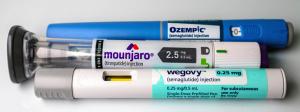Risk of Subsequent Skin Cancer Seen Among Organ Transplant Recipients
The study's goal was to clarify possible second and third skin cancer development patterns among organ transplant recipients who developed more than 1 instance of skin cancer and to better characterize this patient population by patient age and transplanted organ type.
High rates of subsequent
The study authors’ goal was to clarify possible second and third skin cancer development patterns among organ transplant recipients who developed more than 1 instance of skin cancer and to better characterize this patient population by patient age and transplanted organ type. The focus of their analysis was White patients, because they are known to have the highest risks of skin cancer, based on phenotype.
The adult patients (N = 5129) in this analysis had undergone a solid organ transplant at Vanderbilt University Medical Center between 1992 and 2017, and their electronic health record data were analyzed from June 9, 2021, to May 31, 2022. The mean follow-up was 6.6 years. All patients were older than 18 years, and their mean (SD) age was 51.3 (12.9) years; 64.1% were male patients.
“Differences in rates of skin cancer development for first and subsequent skin cancers were measured using t test or analysis of variance and χ2 tests for continuous and categorical variables,” the investigators wrote. “Rates of skin cancer development were compared based on organ type and patient age at transplant using Fine-Gray tests and cumulative incidence plots.”
There were 6842 skin cancers seen among 695 patients (13.6%) of all the patients included in this study. Risk of developing a first skin cancer were higher among patients who received a heart, lung, or kidney compared with those who received a new liver (χ2 test, 25.6; df, 4; P < .001). And mean (SD) skin cancer total per patient varied by organ received: Patients who got a new kidney had the most total skin cancers (11.9 [17.6) compared with lung recipients who had the fewest total skin cancer per patient (4.6 [4.8]; P < .001).
However, lung transplant recipient had the highest overall proportion of skin cancers (17.7%), followed by kidney transplant (16.5%) and heart transplant (16.1%). Liver recipients had the fewest overall proportion of skin cancers (6.8%).
A potential connection also was seen between age at transplant and the time it took to develop a second (χ2 test, 20.4; df, 4; P < .001) or third (χ2 test, 10.9; df, 4; P < .02) skin cancer (P < .001 for all):
- Patients with skin cancer were older: 64.8 vs 57.2 years
- Patients with skin cancer underwent transplant at an older age: 53.7 vs 50.9 years
- Patients with skin cancer had a longer posttransplant follow-up: 11.0 vs 5.9 years
Similar associations were not seen between a particular transplanted organ and time to subsequent skin cancer development.
The study authors emphasized that the clinical importance of total skin cancer development among organ transplant recipients is 3-fold:
- Previous research shows half of skin cancer–related deaths have occurred among organ transplant recipients who have gone on to develop at least 10 skin cancers
- Skin cancer risk has been shown to drop following the switch to a mechanistic target of rapamycin inhibitor from a calcineurin inhibitor—but only among those with 1 instance of skin cancer
- Development of at least 5 basal cell carcinomas has been linked to development of an internal malignant neoplasm compared with outcomes among patients who fewer skin cancers
They also noted that of the 52 patients in their cohort who were treated for skin cancer prior to their organ transplant, all developed an additional skin cancer after their transplant.
“Future studies are needed to better characterize those patients who will develop numerous skin cancers,” the authors concluded, “or identify those who will remain free from skin cancer.”
Reference
Wheless L, Anand N, Hanlon A, Chren M-M. Differences in skin cancer rates by transplanted organ type and patient age after organ transplant in White patients. JAMA Dermatol. 2022;158(11):1287-1292. doi:10.1001/jamadermatol.2022.3878
Newsletter
Stay ahead of policy, cost, and value—subscribe to AJMC for expert insights at the intersection of clinical care and health economics.
Related Articles
 Eating Behaviors May Predict GLP-1 Therapy Success in Type 2 Diabetes
Eating Behaviors May Predict GLP-1 Therapy Success in Type 2 DiabetesSeptember 18th 2025
 Modest Reductions in PrEP Coverage Result in Avoidable HIV Infections
Modest Reductions in PrEP Coverage Result in Avoidable HIV InfectionsSeptember 17th 2025






























































